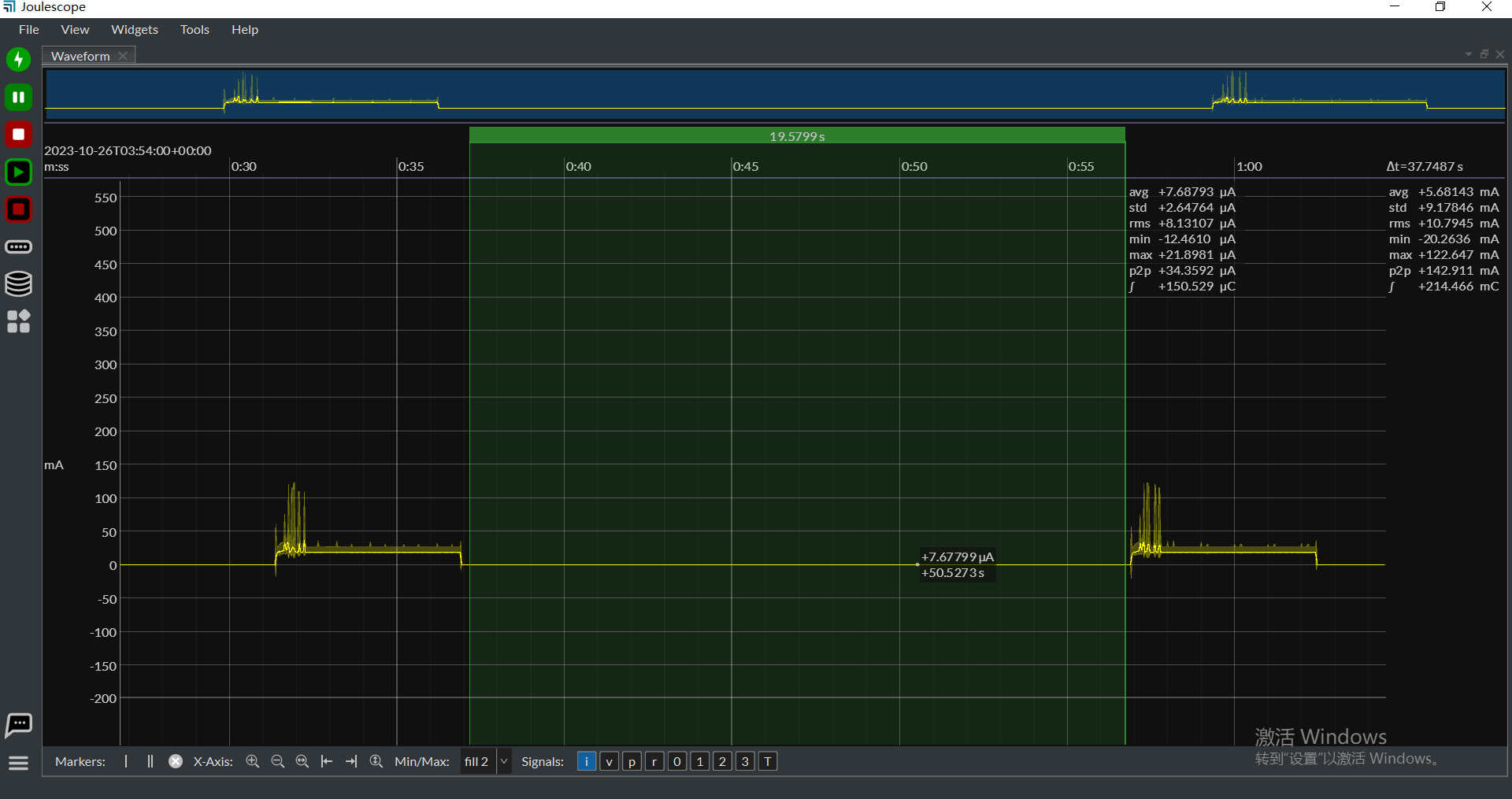* switch root clk src to PLL for modem reg opt and added callback * register power_down/power_up callback in ieee802154 driver for esp32c6 * remove software regdma opt in bt |
||
|---|---|---|
| .. | ||
| image | ||
| main | ||
| CMakeLists.txt | ||
| partitions.csv | ||
| README.md | ||
| sdkconfig.defaults | ||
| Supported Targets | ESP32-C6 | ESP32-H2 |
|---|
OpenThread Sleepy Device Example
The example demonstrates the Thread Sleepy End Device (SED), the device will enter Deep Sleep mode during idle state.
This example is designed to address a specific deep sleep application scenario. First, it connects to the Thread network, and after 5 seconds when the state changes to CHILD, it enters deep sleep mode. There are two ways to wake up in this example: one is by using a 20-second periodic RTC timer, and the other is through GPIO input. Deep sleep is part of the upper-layer logic, and it's the user's responsibility to manage it in their own applications. If you need more wake-up methods, you can refer to the Exapmle deep sleep. Additionally, Espressif provides a stub for handling wake-ups, which allows for a quick check, and the user can decide whether to wake up or continue deep sleep in this stub, as explained in the Example deep sleep stub.
Note: Implementing a standard Thread Sleepy Device is recommended using the Light Sleep example. Deep sleep triggers a reboot, and the device needs to undergo a re-attach process to rejoin the network. This means additional packet interactions are necessary after each wake-up from deep sleep. It can be advantageous in reducing power consumption, especially when the device remains in a sleep state for extended periods, such as more than 30 minutes.
How to use example
Hardware Required
- Prepare two 802.15.4 SoC development boards, one for an OpenThread Leader and the other one for an OpenThread Sleepy End Device (SED).
- Connect the board using a USB cable for power supply and programming.
Configure the Openthread Dataset
- Run ot_cli on another 802.15.4 SoC device to create openthread dataset configuration and start an openthread network as the Leader.
- Configure the Openthread dataset using
idf.py menuconfiginComponent config ---> Openthread ---> Thread Operation Dataset, ensuring that the openthread sleepy device's dataset matches the dataset of the Leader device.
Build and Flash
Build the project and flash it to the board. Use the following command: idf.py -p <PORT> erase-flash flash monitor.
Example Output
As the example runs, you will see the log output indicating the initialization and operation of OpenThread, including the device joining the OpenThread network as a Sleepy End Device (SED).
I(281) OPENTHREAD:[I] Settings------: Read NetworkInfo {rloc:0x4001, extaddr:623954c9725869e6, role:child, mode:0x04, version:4, keyseq:0x0, ...
I(291) OPENTHREAD:[I] Settings------: ... pid:0x3b33d767, mlecntr:0x3ba17, maccntr:0x3baa8, mliid:868f19ce8c3f6207}
I(301) OPENTHREAD:[I] Settings------: Read ParentInfo {extaddr:3afe8db4802dc1aa, version:4}
I (311) ot_esp_power_save: Wake up from timer. Time spent in deep sleep and boot: 20321ms
I (331) ot_esp_power_save: Enabling timer wakeup, 20s
I (331) OPENTHREAD: OpenThread attached to netif
I(341) OPENTHREAD:[N] Mle-----------: Role disabled -> detached
I (291) main_task: Returned from app_main()
I (371) OT_STATE: netif up
I(511) OPENTHREAD:[N] Mle-----------: Role detached -> child
I (531) ot_esp_power_save: Start one-shot timer for 5s to enter the deep sleep
I (5531) ot_esp_power_save: Enter deep sleep
When the device enter deep sleep, GPIO9 also can wake up the device, you can push down the BOOT button then you can see the device wakes up:
I(281) OPENTHREAD:[I] Settings------: Read NetworkInfo {rloc:0x4001, extaddr:623954c9725869e6, role:child, mode:0x04, version:4, keyseq:0x0, ...
I(291) OPENTHREAD:[I] Settings------: ... pid:0x3b33d767, mlecntr:0x3d576, maccntr:0x3d609, mliid:868f19ce8c3f6207}
I(301) OPENTHREAD:[I] Settings------: Read ParentInfo {extaddr:3afe8db4802dc1aa, version:4}
I (321) ot_esp_power_save: Wake up from GPIO. Time spent in deep sleep and boot: 8470ms
I (331) ot_esp_power_save: Enabling timer wakeup, 20s
I (331) OPENTHREAD: OpenThread attached to netif
I(341) OPENTHREAD:[N] Mle-----------: Role disabled -> detached
I (291) main_task: Returned from app_main()
I (371) OT_STATE: netif up
I(511) OPENTHREAD:[N] Mle-----------: Role detached -> child
I (531) ot_esp_power_save: Start one-shot timer for 5s to enter the deep sleep
I (5531) ot_esp_power_save: Enter deep sleep
During the deep sleep, a typical power consumption is shown below:
